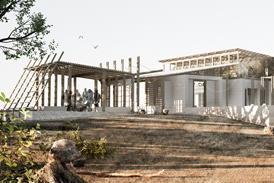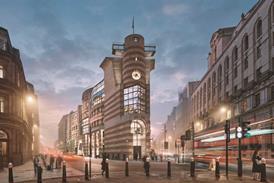- Home
- Intelligence for Architects
- Subscribe
- Jobs
- Events

2025 events calendar Explore now 
Keep up to date
Find out more
- Programmes
- CPD
- More from navigation items
Review | Chris Dyson Architects: Heritage & Modernity

A new book on the respected architectural practice highlights work that straddles tradition and innovation, writes Richard Griffiths
Chris Dyson is one of that happy band of architects designing at the interface between old and new. The book cover of his new book says it all, the title - Heritage & Modernity - and the photos – details of rusted corrugated CorTen steel cladding juxtaposed with traditional stone walling of rubble stone and ashlar quoins. It is a fine record of the work and approach of one of the most interesting architects of our time, beautifully designed and produced: go out and buy it now!
…
This content is available to registered users | Already registered?Login here
You are not currently logged in.
To continue reading this story, sign up for free guest access
Existing Subscriber? LOGIN
REGISTER for free access on selected stories and sign up for email alerts. You get:
- Up to the minute architecture news from around the UK
- Breaking, daily and weekly e-newsletters
Subscribe to Building Design and you will benefit from:

- Unlimited news
- Reviews of the latest buildings from all corners of the world
- Technical studies
- Full access to all our online archives
- PLUS you will receive a digital copy of WA100 worth over £45
Subscribe now for unlimited access.






